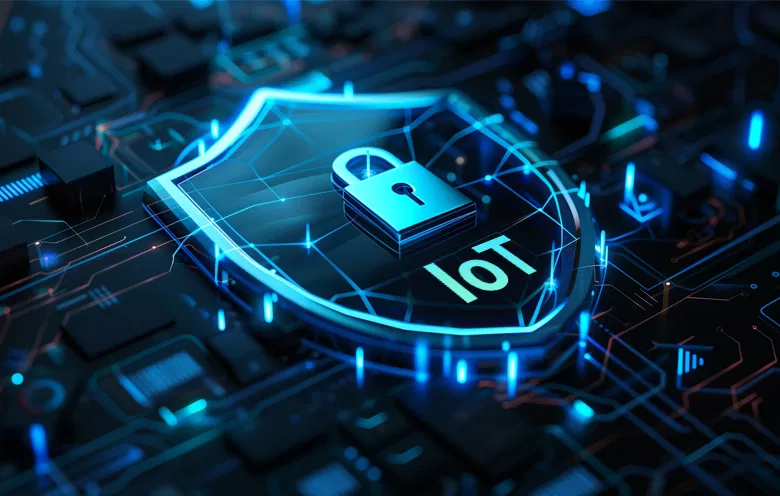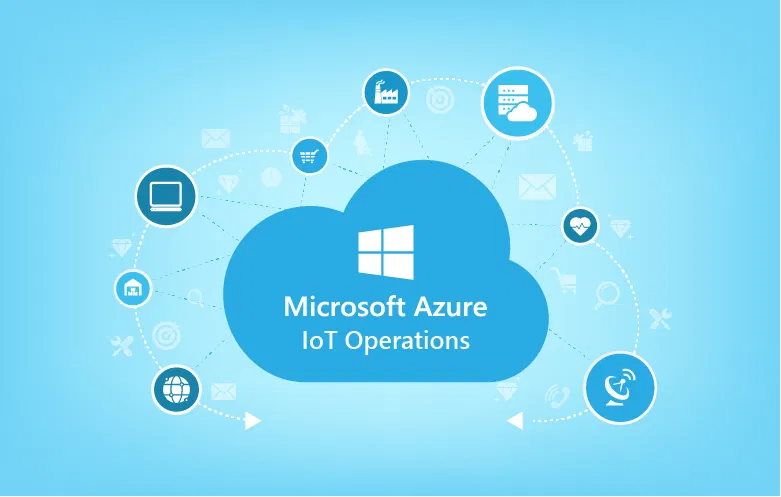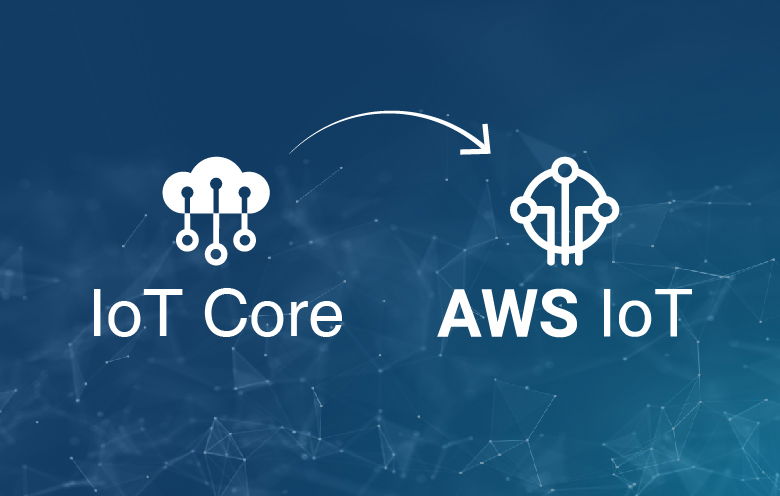The Internet of Things has remained the hype of the tech industry over the past few years. But, have you joined the IoT revolution yet? If you are wearing a fitness tracker or have a smart home setup with smart security and connected devices, you already are a part of this revolution. If not, that time isn’t far when you would be surrounded by connected “things” wherever you go.
While people have already started automating their home using smart and connected devices, businesses are also banking on the Smart Office concept. IoT Implementation Services can change the way your business works, no matter which industry sector you belong to.
[workshop_avnet_1920]
Here are some of the most important aspects every CIO or CTO should take into account before considering IoT implementation:
1. IoT infrastructure requirement
The first thought that strikes anyone’s mind when it comes to IoT implementation is what infrastructure is a prerequisite for IoT. The question – whether it will need smart devices or will it merge with an existing system – becomes a decision factor in the adoption of this advanced technology.
IoT may not necessarily require devices that come with “smart” abilities; it can be merged with an organization’s legacy system, depending on the level at which IoT implementation is to be done. Legacy systems can be made smarter by installing sensors, thus making them IoT-friendly.
2. Data collection
Data collection and processing may seem like a complex task, which would require connecting sensors to all the devices to make them “connected”. Once the devices are connected with a common network, it will require collecting data from all those devices at a central location, and processing the data to convert it into something meaningful.
If you wish to skip the multifaceted process, you can hand it over to data science experts, who are skilled at mining data from disparate sources. They can process the data for you and provide you with actionable insights. You can then analyze this information to build an execution plan to help your business grow.
3. Device monitoring and management
Even though device monitoring and management are important aspects to ensure a smooth operation, it’s not possible to keep an eye on assets continuously. Continuous monitoring with IoT becomes easy as connected devices allow businesses to dig deeper in case of technical issues and get to the root of the problem.
IoT also helps enterprises to offer a better customer service by providing remote technical support. Businesses can use predictive analytics to reduce the chances of device failures and resolve technical issues before they further harm the entire system.
4. IoT isn’t here to challenge humans
A lot of people tend to think that the Internet of Things will endanger their jobs or will reduce the requirement of skilled workers, but in fact, it’s the other way around. Even after IoT implementation, enterprises will need skilled workers who can analyze data and take suitable actions for the betterment of a business.
The Internet of Things is more of a companion for employees and workers, which makes their job easier and effectual. IoT isn’t here to challenge human skills; rather it is here to push them forward to achieve higher organizational goals. Chances are, IoT may or may not be suitable for your enterprise, depending on your organization’s maturity and the products/services that you offer. Our IoT consulting will help you know if your enterprise needs IoT.
5. IoT operating system
IoT implementation in any organization may require a wide array of devices starting from sensors to microcontrollers and processors. Requirements of such a network are too diverse to be fulfilled by a traditional operating system or a typical operating system that is used for sensors.
To overcome redundant maintenance costs involved with IoT networks, a specialized operating system is essential. For example, a microkernel-based operating system named RIOT is empowered to satisfy the varied demands that are linked with IoT network. RIOT works with everything starting from sensors to machines that are connected to the IoT network.
6. Interoperability
Interoperability is often overlooked by a majority of IoT providers as all of them are focused on pushing their proprietary products along with the connected devices. Interoperability between devices becomes more of a herding cats problem as devices from one proprietor are incompatible with other proprietary products.
If we are surrounded by hundreds of devices, it becomes cumbersome to handle all of those devices using different proprietary interfaces. To address this issue, the ability to test APIs using a common mechanism and a system in which users are allowed to push and pull information from devices becomes mandatory.
7. Hosting model
The hosting model for the Internet of Things can be categorized as on-premises, private cloud, and public cloud. The basic idea behind a hosting model is to provide a storage and access to all the data that is collected from the connected devices.
On-premises hosting using physical web servers can be done to keep track of all the data that is generated by devices in an organization. A better alternative to on-premises hosting is cloud hosting. All the data can be hosted on a public or private cloud, which can be accessed by users from anywhere. While data on a public cloud can be easily accessed by authorized organization, data in a private cloud is more secure as it is assigned to a specific client.
8. IoT protocols
Instead of assigning one of the OSI model layers to each of the protocol, here is a categorized list of all the IoT protocols that are used in implementing IoT:
- Data Protocols – MQTT, AMQP, CoAP, Node, Websocket
- Comms/Transport – Bluetooth, LPWAN, Wi-Fi
- Device Management – OMA-DM, TR-069
- Identification – uCode, IPv6, EPC, URIs
- Semantic – Web Thing Model, JSON-LD
- Discovery – Physical Web, mDNS, DNS-SD
- Multi-layer Frameworks – Weave, IoTivity, Homekit, Alljoyn
- Infrastructure – IPv4/IPv6, 6LowPAN, RPL
9. Implementation cost
Cost is the deciding factor on whether or not IoT will be implemented in an organization. Businesses have tried to get an exact amount that connecting all the surrounding devices would cost, but more often than not, they have failed to figure out the associated cost.
Some of the costs that would sum up while undertaking IoT installation includes expenses associated with upgrading infrastructure, getting IoT-ready devices, the upfront cost of installation, hidden costs, etc. If you already have IoT-friendly devices in your organization, you have a leg up. But if not, you would have to update from a legacy system to an advanced system, depending on the features you want to implement.
10. IoT security
IoT security is an attempt to safeguard IoT network and connected devices. For any organization, safeguarding their business information is really critical. Unstructured data can be used to get information but ill-informed data will lead to irrelevant actions, which can harm the enterprise in several ways. Let’s take an example – temperature of a machine rises higher than the peak heating level, this can be a sign to stop using that machine for a longer time. But if the security of data is compromised and data doesn’t reflect the higher temperature, it can lead to serious problems for the manufacturing plant.
When every device that you use is connected to a common network, security of all the devices becomes a foremost concern. Compromising security of a single device can cause a threat to the entire connected system. To make sure that the data collected is relevant, enterprises need to make sure that their IoT provider considers security as their topmost priority.
11. IoT analytics
Once the data collection is done, next step is to analyze the collected data, so that the derived information makes more sense. When you connect hundreds of devices, you would receive a huge amount of data linked with different devices. Under IoT analytics, all the data will be processed using data science and further represented in a meaningful manner using data visualization tools.
A lot of companies struggle to get the relevant data that can later be used to generate actionable information. On the other hand, there are companies that have a bulk of data, but they are not sure how to visualize that data and get some meaning out of it. If that’s the case with your enterprise, you can rely on data science and visualization experts who can provide you with the valuable insights that your organization’s data generates.
12. IoT isn’t just automation
Automation is without a doubt a major part of IoT implementation. However, the Internet of Things is much more than just automating manual tasks. It works to define a network, monitor performance of all the connected devices, and take proactive measures to improve the overall process of a typical work environment.
Wrapping up
Internet of Things is a technology that will help you stay in a constant touch with your devices, even when you are physically away from them. It is about managing things on its own and making lives easier. If you still have some unanswered questions or would like to dig deeper for your IoT-related queries, get in touch with our IoT experts.



